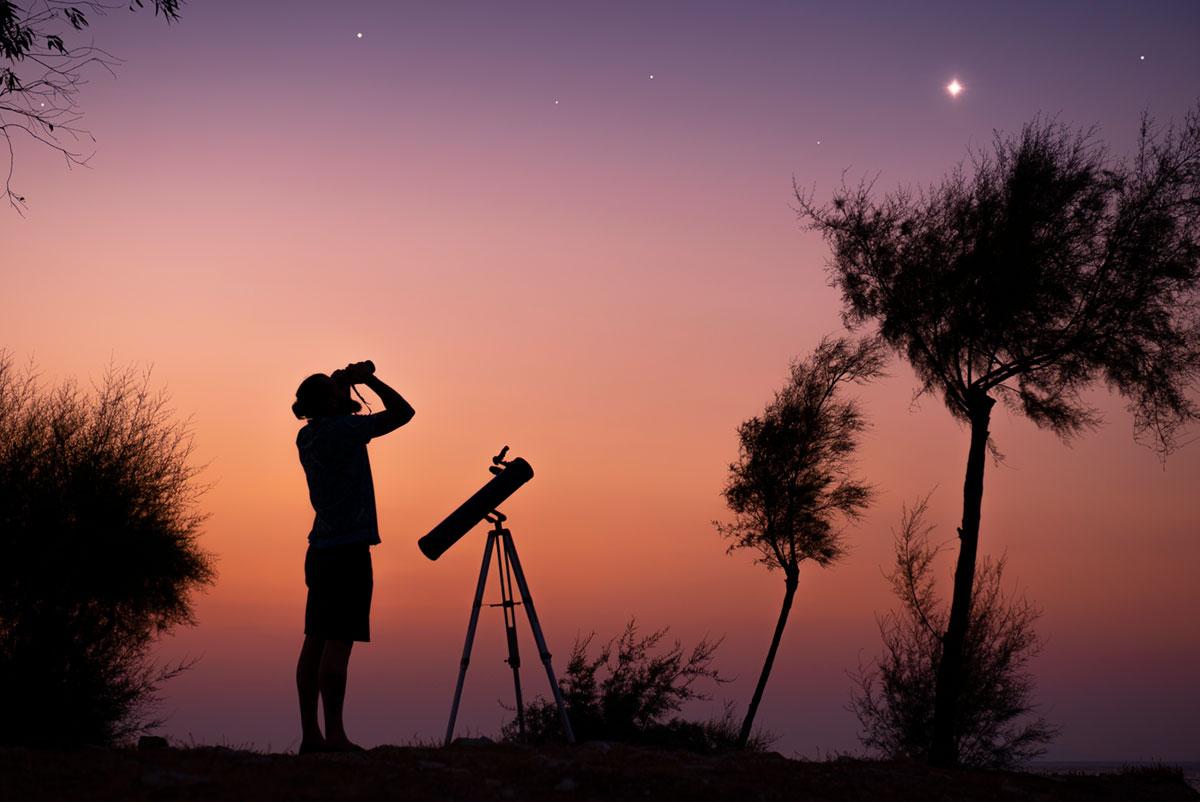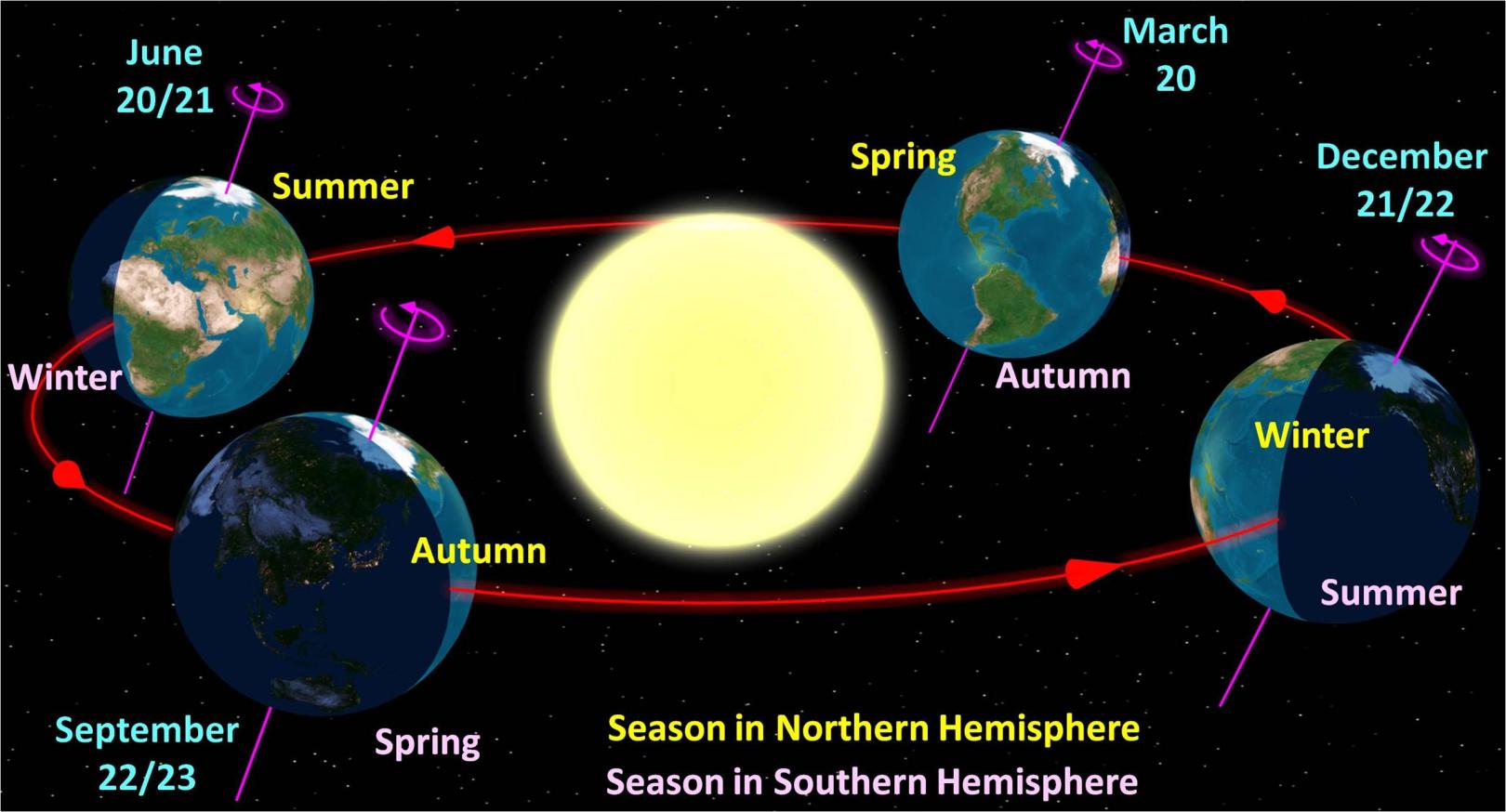
Date:
The last few weeks of winter always seem to drag on for months. Unsettled weather alternates between tantalizing hints of warmth and throwbacks to December. Thankfully, the Earth continues its orbital motion around the Sun, insuring our return to spring. This year, the first day of spring, the Vernal Equinox, occurs on March 20th at 11:33 am in the Northern Hemisphere.
Vernal Equinox occurs when the tilt of the Earth’s rotational axis reaches a particular position. We’re all aware of the imaginary axle the Earth spins around once every 24 hours. While we might imagine that axle to be vertical – that is, perpendicular to Earth’s orbital plane – the axle is tilted 23.5 degrees from vertical. It’s this tilt, not our proximity to the sun, that causes our seasons. Let’s see what this might look like if we could be far enough out in space.

This image is waaaaay out of scale in almost every dimension shown (that’s another whole subject by itself!) but it does illustrate how the Earth’s daily spin axle is tilted away from vertical.
To understand how the tilt causes seasons, look first at the summer and winter Earths. The summer Earth shows the north pole tilted towards the sun, bathed in sunlight, around June 20. The winter Earth is tilted away from the sun; the north pole deep in darkness around December 21. These are the two extremes of annual solar illumination: longest days in the summer and shortest days in the winter.
Here’s the counter-intuitive part: Earth is closest to the sun in early January and most distant in early July! Turns out seasonal heating and cooling isn’t caused by how close we are to the sun, but instead is affected by the Earth's axis tiling toward or away from the sun. When the rotational axis is tilted toward the sun, the sun’s energy strikes that part of the planet at a steeper angle. With the rays being closer to vertical, the energy gain per square meter of area is higher. When the rotational axis is tilted away from the sun, the energy gain per square meter is lower.
So where do the words "equinox" and "solstice" come from? Both come from the Latin -- for "equal night" and "sun stand still." The first days of spring and fall are equinox days, when Earth experiences 12 hours of daylight and darkness. The first days of summer and winter are solstice days and, according to its definition, the sun has stopped -- either gaining maximum height at noon in summer, or achieving minimum elevation at noon in winter. In summer, we experience the greatest number of hours of daylight – up to 24 hours at the poles; in winter, the fewest hours of daylight -- no daylight at all at the poles!
You can actually simulate this cool feature of Earth’s orbit in your kitchen at home. You’ll need a grape, a toothpick, and a light source like an unshaded lamp. Poke the toothpick through the long axis of the grape. In this case, the grape represents Earth and the toothpick the Earth’s rotational axis. The lamp is the sun. Tilt your Earth model so that the toothpick is about 23 degrees away from vertical. Hold your tilted Earth about 15 cm away from the light bulb and orbit the lamp like the Earth orbits the sun – in a circle around the bulb. Stop at the points where the toothpick is tilted towards the bulb and where it points away from the bulb. These are the ‘winter’ and ‘summer’ points – the solstices. Halfway between winter and summer are the equinox points – spring and fall. Can you figure out which equinox goes where?
By the way, the red planet Mars, with a similar axial tilt, has seasons too. Not quite as pleasant, but because Mars takes about two Earth years to orbit the sun, the seasons are twice as long. Now eat the grape!


